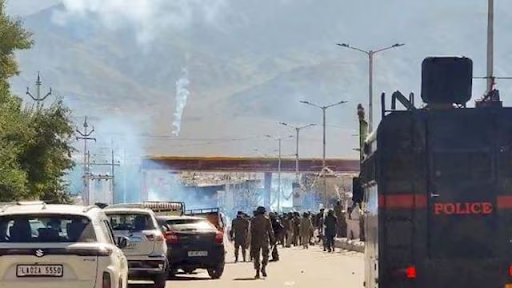



India has launched nationwide civil defence drills from May 7-9, 2025, in response to rising tensions with Pakistan after the Pahalgam terror attack. The drills involve air-raid warnings, blackout measures, evacuation plans, and civilian training across 244 districts, especially in border areas and cities with strategic installations, ensuring preparedness for emergencies.

Copyright infringement not intended
Picture Courtesy: THE HINDU
India launches nationwide civil defence drills amid heightened tensions with Pakistan post-Pahalgam attack.
The Ministry of Home Affairs (MHA) directs all states and union territories to conduct civil defence drills starting May 7, 2025, and continuing until May 9, 2025.
These drills prepare civilians for potential hostile attacks, such as air raids or cross-border conflicts, amid rising tensions with Pakistan following a deadly terror attack in Pahalgam, Jammu and Kashmir, on April 22, 2025, which killed 26 people.
It is the first nationwide civil defence drill since the 1971 India-Pakistan war, signaling heightened alertness due to the current geopolitical situation.
Air-Raid Sirens
Authorities test air-raid warning sirens in urban and semi-urban areas to alert civilians of potential aerial threats, like missile or drone attacks. These sirens signal people to seek shelter immediately.
Crash Blackout Measures
Civilians practice switching off lights and electronics to reduce visibility during air raids. For example, a 30-minute blackout drill occurs in Ferozepur, Punjab, on May 4, 2025, where residents turn off lights from 9:00 p.m. to 9:30 p.m. This mimics wartime conditions to avoid detection by enemy forces.
Evacuation Plans
Authorities update and rehearse evacuation plans to move people from high-risk zones (e.g., border villages or areas near military sites) to safe locations like bunkers, subways, or basements. These rehearsals identify bottlenecks for smoother execution in real emergencies.
Training Civilians and Students
Around 400,000 volunteers from the Directorate General of Civil Defence, along with school and college students, National Cadet Corps (NCC), Nehru Yuva Kendra Sangathan (NYKS), and National Service Scheme (NSS) members, receive training. They learn to respond to sirens, take cover, use first aid, and assist in firefighting or rescue operations.
Cleaning Bunkers and Trenches
In border areas, especially Jammu and Kashmir, authorities clean and restore bunkers and trenches to shield civilians from cross-border firing. These structures are common in villages near the LoC.
Hotline with the Indian Air Force
States establish and test communication links with the Indian Air Force to ensure quick coordination during an attack. Control rooms and shadow control rooms also activate to manage operations.
Mobilizing Services
Civil defence services, including wardens, firefighters, and rescue teams, activate to test their readiness. Police, Home Guards, and disaster response forces like the NDRF and SDRF participate to train civilians and manage scenarios like crowd control or fire emergencies.
|
These activities simulate wartime conditions, ensuring civilians know how to react and authorities can coordinate effectively. |
The drills cover 244 designated Civil Defence Districts across 33 states and union territories. These districts are chosen for their strategic importance:
Must Read Articles:
Pakistan Violates LoC Ceasefire
Pahalgam terror attack: Indus treaty with Pakistan put on hold
Source:
|
PRACTICE QUESTION Q. Critically analyze how the evolving nature of internal security threats in India has necessitated a shift from state-centric to citizen-participatory models of security governance. 150 words |






© 2025 iasgyan. All right reserved